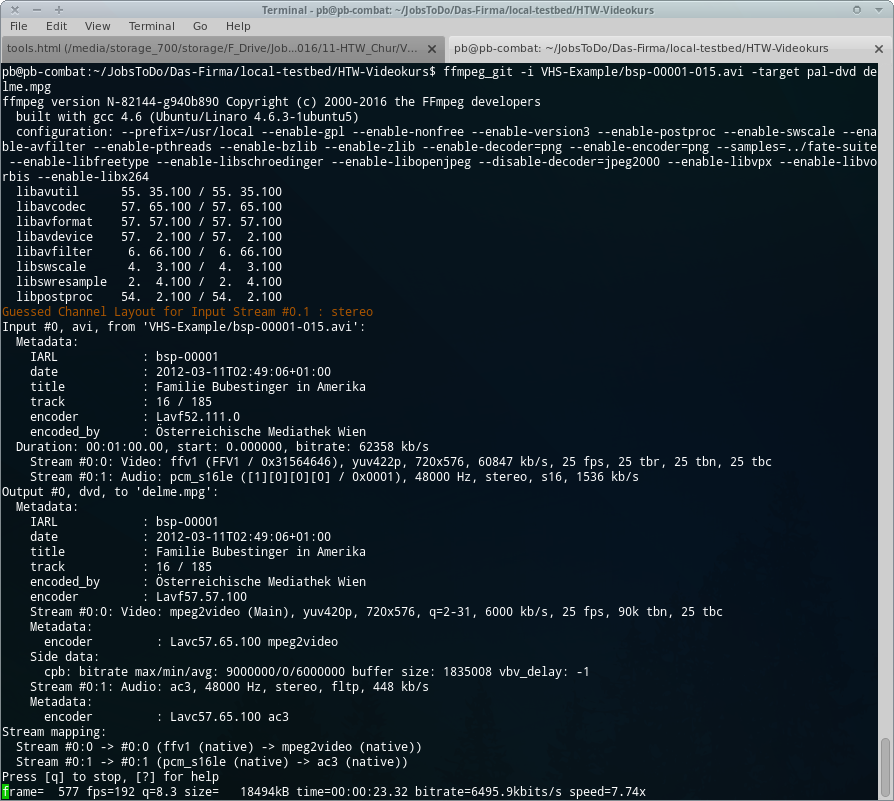


-c:v: sets the video codec you want to use.-i: is follwed by the path to the input video.The basicsīefore jumping into some examples, let’s start with some of the most widely used commands: It is 170mb video (20 seconds long) and was shot at 30 FPS on a GoPro MAX Camera and stitched using GoPro Player at 4k (4096x2048). This blog post, or cheat sheet as I’m calling it, will help you get to grips with some of the commands that we often use to process videos to make virtual tours.įor this example I will be using the following equirectangular video ( GS018421.mp4). If you run mediainfo on the command line, you can even request output in XML format: mediainfo -OUTPUT=XML DV06xx.aviĪe mode=full automatic / wb mode=automatic / white balance= / fcm=manual focusĪdding the optional parameter -f will produce even more detailed information.A guide that shows some of the commands we use most for processing 360 virtual tour videos.įFmpeg is one of the most powerful tools for video transcoding and manipulation, but it’s fairly complex and confusing to use. However, ffprobedoes not retrieve as much information as my favorite tool, Mediainfo, does, e.g., 'ffprobe' does not display the time code of first frame of the video (although the man page claims otherwise) or the recording date. For information about overall content of a multimedia file use ffprobe -show_streams -show_format DV06xx.aviĪnd for information about each single frame in a video file use ffprobe -show_frames DV06xx.avi You can use ffprobe (which comes with ffmpeg) for gathering information about multimedia files.

While if i use ffmpeg ffmpeg -i IMG_0014.MOV -f ffmetadata metadata.txt I prefer using exiftool which offers me more outputs than ffmpeg.


 0 kommentar(er)
0 kommentar(er)
